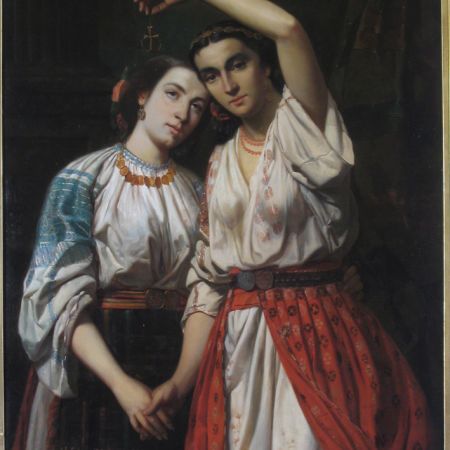Theodor Aman (1831 - 1891) was one of the great masters of 19th century Romanian art, an influential teacher and member of the Romanian Academy and also the founder of the first ever fine arts schools, opened in Bucharest and Iasi. Very popular and respected in his home country, he is considered to be the last "classical artists" when it came to his style, although he was opened to every new trends and currents in his lifetime, being particularly impressed by the principles of Impressionism. He was often inspired by important moments in Romanian history, works which brought his fame to a large degree.
Born on March 20th 1831 in Campulung-Muscel, he first studied art in Bucharest, then left for Paris to pursue his education. At first he was influenced mainly by the Italian Renaissance and painted in an academical style, which he would conserve for the rest of his life, later adding several new elements and influences, as he wanted to create a Romanian style, specific to his upbringing and experiences, that would also be respected and liked abroad. Upon his return to Romania he painted a series of works, mainly landscapes and peasant scenes, inspired by the what he saw in the region of Campulung. He had several exhibitions and commisions, with great success, and in 1850 he left for Paris, where he continued his studies.

Work National Art Museum Bucharest
He was the founder of the Fine Arts School in Bucharest and Iasi, the first institutions of this kind in Romania, and since 1863 he was also the director of the National Fine Arts School. As a painter, he was well respected and imitated, as he tried to create works that were in tone with the national awakening of a country that wanted it's independence. Most of his historical scenes, although in an academical and classical style, are marked by this romantic feeling of freedom and dignity. Most of these works were inspired by actual scenes from Medieval and later Romania, rulers such as Vlad Tepes or Stefan cel Mare being the main characters. Emphasising the importance of history and the pride about the exploits of the forerunners, Theodor Aman became a model for other younger artists.
2008-05-29

































